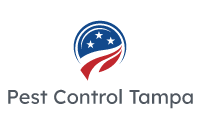Title: The Top 3 Factors That Attract Pests to Invade Homes in Tampa
Title: The Top 3 Factors That Attract Pests to Invade Homes in Tampa
Pest Control Tampa is of utmost importance to homeowners in the area. Understanding the factors that attract pests can help prevent infestations and ensure a pest-free home.
1. Food Availability: Pests are attracted to homes with easily accessible food sources. Crumbs, spills, and unsealed food containers provide an open invitation for pests like ants, rodents, and cockroaches. To prevent this, it’s crucial to clean up after meals, store food properly, and regularly empty trash cans.
2. Moisture and Water: Tampa’s humid climate creates an ideal environment for pests that thrive in damp conditions. Leaky pipes, standing water, and high humidity levels attract pests such as mosquitoes, termites, and silverfish. Regularly inspecting and fixing any water-related issues can help prevent pest infestations.
3. Entry Points: Pests can find their way into homes through small cracks, gaps, and openings. Common entry points include damaged window screens, gaps around doors, and cracks in the foundation. Sealing these entry points with caulk or weatherstripping can help keep pests out.
In conclusion, maintaining a pest-free home in Tampa requires addressing the factors that attract pests. By ensuring food availability is minimized, moisture and water issues are resolved, and entry points are sealed, homeowners can greatly reduce the risk of pest infestations.
Frequent questions
What are the most common attractants for pests when they invade homes in Tampa?
The most common attractants for pests when they invade homes in Tampa are:
1. Food: Pests are attracted to easily accessible sources of food, such as unsealed food containers, crumbs, and spills. It’s important to keep kitchens and dining areas clean and free of food debris.
2. Water: Pests need water to survive, so any standing water or moisture in the home can be a major attractant. Fixing leaky pipes, ensuring proper drainage, and keeping areas dry can help prevent pest infestations.
3. Shelter: Pests seek shelter in warm and cozy spaces, such as attics, basements, and crawl spaces. Ensuring proper insulation, sealing entry points, and decluttering storage areas can minimize hiding spots for pests.
4. Garbage: Leaving garbage cans uncovered or not properly sealed can attract a variety of pests, from ants to rodents. Regularly disposing of trash and maintaining clean garbage areas can discourage pest activity.
5. Vegetation: If the exterior of the home has dense vegetation or overgrown trees and shrubs, pests can use these as pathways to enter the house. Regularly trimming vegetation away from the home’s foundation can help prevent pest access.
It’s crucial to address these attractants and implement preventive measures to reduce the risk of pests entering and infesting homes in Tampa. Professional pest control services can also provide effective solutions tailored to the specific pest problems in the area.
How do pests find their way into homes and what are the key factors that make a home more susceptible to infestations?
Pests can find their way into homes through various means, and there are several key factors that make a home more susceptible to infestations.
Entry Points: Pests can enter homes through gaps, cracks, and openings in doors, windows, foundations, and utility lines. It’s important to seal these entry points to prevent pest intrusion.
Food and Water Sources: Pests are attracted to homes that provide easy access to food and water. Leaving food out in the open, not properly storing garbage, and having leaky pipes or standing water can attract pests.
Cluttered Environment: Cluttered spaces provide hiding places for pests, making them more likely to infest. Piles of boxes, excessive storage, and unkempt areas are attractive to pests seeking shelter.
Poor Sanitation Practices: Failing to maintain proper sanitation practices can increase the likelihood of pest infestations. This includes not cleaning regularly, leaving crumbs or spills unattended, and not properly disposing of waste.
Proximity to Green Spaces: Homes located near green spaces such as parks, wooded areas, or bodies of water are more susceptible to pest infestations. Pests can easily travel from these areas into homes, seeking shelter and resources.
Lack of Pest Control Measures: Not implementing preventative measures and regular pest control services can make a home more vulnerable to infestations. Regular inspections, sealing entry points, and using appropriate pest control methods are essential in preventing infestations.
Overall Maintenance: Neglecting general maintenance, such as repairing damaged screens, fixing broken seals, and addressing moisture issues, can create opportunities for pests to enter the home.
By addressing these key factors, homeowners can reduce the risk of pest infestations and create a less hospitable environment for pests in their homes.
Can you provide some tips on how to prevent pests from invading homes in Tampa by addressing the factors that attract them?
In conclusion, understanding what pests are looking for when they invade a home is crucial in implementing effective pest control measures. Eliminating their access points, such as sealing cracks and crevices, will help prevent their entry into the house. Removing potential food sources, such as storing food properly and keeping countertops clean, will make your home less appealing to pests. Additionally, removing any standing water or excess moisture will discourage pests from seeking shelter in damp areas. By addressing these three key factors, homeowners in Tampa can greatly reduce the risk of pest infestations and ensure a pest-free living environment. Don’t let pests take over your home – take action and protect your space today.
